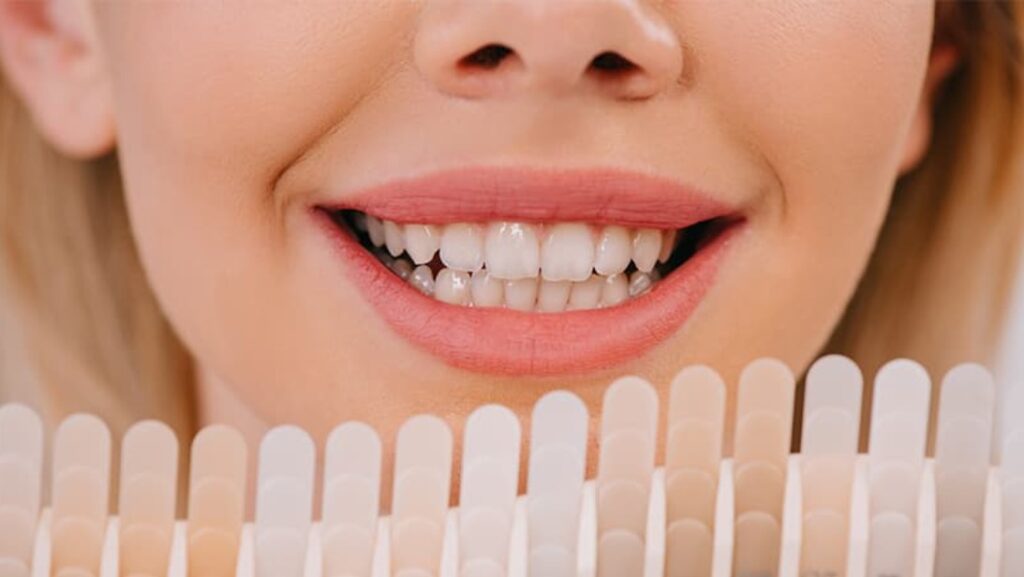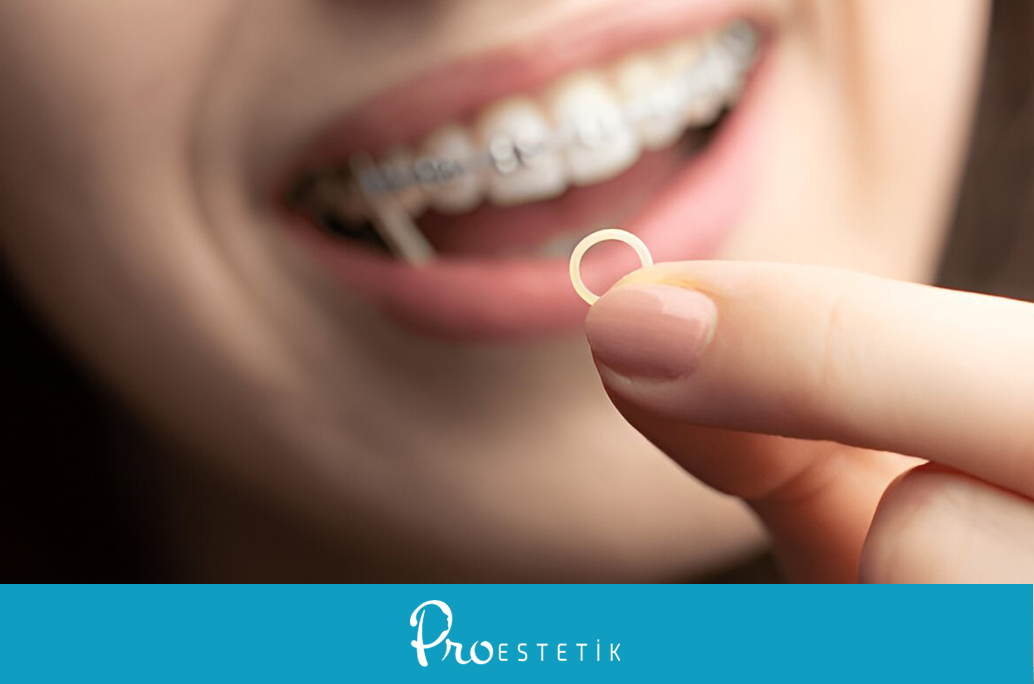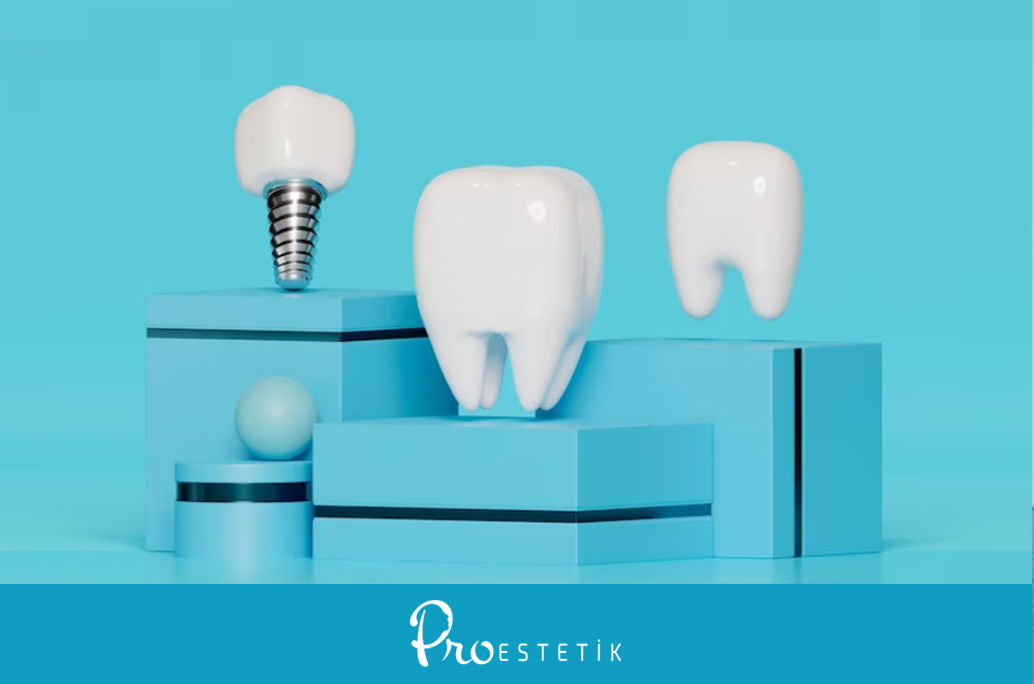Dental laminate, also known as veneer, is a dental treatment method used to address aesthetic concerns and improve the appearance of teeth. It involves minimal reshaping of the tooth surface without cutting and bonding thin porcelain veneers onto the surface of the teeth.
These porcelain veneers adhered to the tooth surface are very thin and do not contain any metal. Being semi-transparent, laminate coating allows light to pass through, resulting in a very natural appearance.
Let's delve into the process of how dental laminate is done...
How is Dental Laminate Done?

In recent years, dental laminate, which has become quite popular, has a relatively easy and comfortable treatment process. The process starts with taking intraoral measurements and then proceeds with slight reshaping of the teeth. After a small amount of thinning is done on the tooth, custom-made porcelain veneers are bonded to the tooth surface using a special adhesive.
During the procedure, the patient does not feel any pain or discomfort, and they can start using their teeth immediately on the same day the procedure is done.
Why is Dental Laminate Done?

Understanding what dental laminate is involves looking at why it's done. Dental and oral care can sometimes be neglected, leading to changes in tooth color. It becomes challenging to restore teeth to their original white color once they start yellowing.
When other treatments fail to restore teeth to their former state, dental laminate is resorted to. This method offers a natural and white appearance.
In some cases, despite regular oral care, genetic factors and the effects of food substances can cause discoloration, wear, breakage, staining, and structural changes in teeth. To eliminate all these appearances and create an aesthetic look, this coating method is applied.
This method can also be used to close gaps between teeth.
Who is Dental Laminate Applied to?

Individuals interested in getting dental laminate must be over 18 years old because application to individuals whose jaw development is not yet complete can be risky.
Some specific conditions may hinder the application of this method. These conditions include jaw irregularities, fluorosis, nail biting, teeth grinding and clenching during sleep, bruxism, biting hard objects like pencils, and similar disorders.
Furthermore, individuals with advanced gum recession should not undergo laminate coating. Before the dental coating procedure, any issues with teeth and gums should be identified and treated before the coating process takes place.
Types of Dental Laminate
We've answered the question "What is dental laminate?" Now, let's provide examples of types of dental laminate. There are different types of laminate applications:
- Composite laminate,
- Porcelain veneer,
- Zirconium veneer.
The difference between them lies in the material used. However, regardless of the material used, the coating, which has a semi-transparent feature, transmits light and provides a very natural appearance, resulting in aesthetically pleasing white teeth.
Advantages of Dental Laminate Application
Aesthetic dentistry applications have become quite popular recently, with dental laminate applications standing out in this field. The advantages of this coating procedure are as follows:
- Provides a very natural appearance with the right color selection,
- No color changes are observed,
- It has a strong and sturdy structure,
- Provides a beautiful appearance aesthetically,
- Can be applied to a single tooth if necessary,
- It has a smooth surface,
- Resistant to stretching and pulling,
- Due to its natural appearance, it is difficult to distinguish from real teeth.
How Long Does Dental Laminate Last?

The biggest question on the minds of those who will undergo the procedure is how long the coating will last. These coatings, which have a strong and resistant structure, generally do not experience issues such as breakage or detachment, and it can even be said that such occurrences are rarely seen.
For the coating to have a healthy and aesthetic appearance, oral and dental care must be done regularly. If oral and dental hygiene is not prioritized, problems such as gum recession can occur.
In such cases, the coatings may be damaged and may even need to be removed. On the contrary, when importance is given to oral and dental hygiene, the lifespan of the procedure can be extended and can be used for 10-20 years.
NOTE: Addressing whether dental laminate application is harmful...
Are There Any Risks Associated with Dental Laminate Application?

One of the biggest questions in the minds of people researching "What is dental laminate?" is whether there are any risks associated with laminate coating. When the application is performed correctly in a clinical setting, there is no risk to health. Patients who experience discomfort after the application generally neglect oral and dental hygiene.
Although there are no issues during the application and the procedure itself, there are some potential downsides to laminate coating:
- If there is a break or crack, it cannot be repaired,
- It may cause slight sensitivity to hot and cold,
- It cannot be whitened through teeth whitening procedures.
Testimonials from Those Who Have Received Porcelain Laminate Veneers
Dental laminate treatment is a method that is liked and yields positive results for many individuals in various situations. However, individuals do not always give positive feedback. Let's explain this with the testimonials of those who have received dental laminate...
It can be said that many of those who have received dental laminate treatment are satisfied, especially in terms of aesthetics and appearance. However, dental laminate treatment may not always be successfully applied. Especially if there are some irregularities in the jaw structure, dental laminate cannot be applied. In such cases, the feedback from patients is generally negative. Moreover, it should be noted that many patients complain about the high costs.

 English
English Turkish
Turkish Deutsch
Deutsch العربية
العربية![[:en]What is Dental Laminate? How is the Application Done?[:tr]Lamine Diş Nedir? Uygulaması Nasıl Yapılır?[:de]Was ist Zahnverblendung? Wie wird die Anwendung durchgeführt?[:ar]ما هو تجميل الأسنان؟ كيف يتم التطبيق؟[:] Lamine Diş Fiyatları](https://proestetik.com.tr/wp-content/uploads/2023/02/Lamine-Dis-Fiyatlari.jpg)










